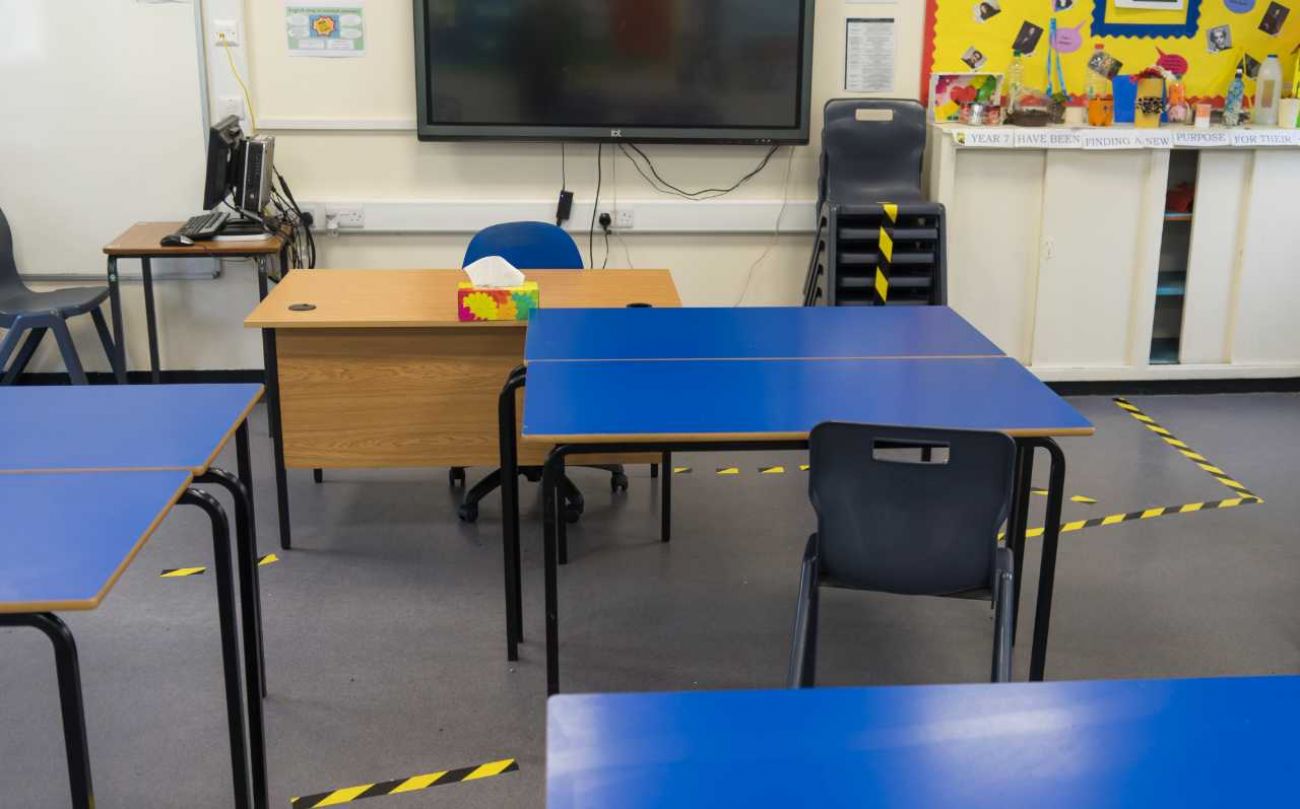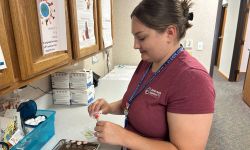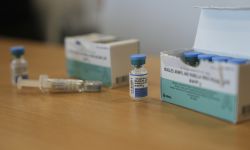Michigan to identify schools with COVID outbreaks. In a couple of weeks.

CORRECTION: An earlier version of this article misstated the computer reporting system that allows the state to identify schools with COVID-19 outbreaks. It has been updated to reflect that the state captures coronavirus data through weekly situation reports from local health departments.
Michigan’s top health official said Friday the state will release the names of more than a dozen K-12 schools and colleges where there have been confirmed COVID-19 outbreaks.
But she said her office can’t do so for an undetermined number of weeks.
The state first has to cobble together a workaround on its outdated reporting systems — work that begins next week, Dr. Joneigh Khaldun, Michigan’s chief medical executive, told Bridge Michigan in an interview late Friday afternoon.
“In the upcoming weeks, we'll be able to post information, at least by school, on our website,” Khaldun said. “So if a parent is interested in seeing if there are any outbreaks associated with their school, we are able to have that information on our website.”
Waiting weeks is not likely to help parents seeking the names of schools or colleges implicated in the outbreaks. As Bridge was first to report Wednesday, there are 14 confirmed school-related COVID-19 outbreaks in Michigan. The state defines an outbreak as two or more cases with a common source of exposure.
The Michigan Department of Health and Human Services has refused to name the schools or colleges involved, or much about them, including how many students or staff are infected or whether they are public or private institutions. Department spokesperson Lynn Sutfin told Bridge Wednesday that naming the schools would be up to local health officials or the schools themselves.
Khaldun, who also carries the title of chief deputy director of health at MDHHS, told Bridge Friday she doesn’t know the names of the schools tied to the outbreaks.
She said weekly situation reports, which collect outbreak information from local health departments, are limited by drop-down menus that don’t allow for the naming of specific schools. That information will need to be collected manually, Khaldun said.
On Thursday, Sutfin released broad geographical information on the outbreaks, saying they were located in eastern and central lower Michigan, in state-designated pandemic regions that range from the Ohio border, north through the Thumb to Alcona County, and west to the Lansing area.
On Friday, Khaldun offered still a bit more.
At least nine of the outbreaks were considered “ongoing,” meaning they had at least one new case associated with the outbreak in the past two weeks; two outbreaks were new. The other three were outbreaks reported more than 14 days ago — the length of time it takes for symptoms of a new COVID infection to surface, Khaldun and Sutfin said.
Sutfin and some local health officials told Bridge that schools, at a minimum, would notify anyone or their family if they’ve been in direct contact with an infected person. Beyond that, the level of notifications will be determined on a case-by-case basis, they said.
“If you’re a parent at the school, you will know. That’s what matters,” said Michael McElrath, spokesman for the Wayne County Health Department.
Even though schools are “not required to provide broad notification,” Susan Ringler Cerniglia, spokeswoman for the Washtenaw County Health Department told Bridge, many “will likely choose to do so to avoid unnecessary concerns and/or to provide assurances that any possible cases are being investigated and handled appropriately.”
McElrath, of Wayne County, and others said public health officials must balance the need to contain the virus with the privacy of individuals and singling out individual schools can cause panic and lead parents to unfairly blame a school for a COVID case.
“For people's privacy sake, we release the minimum amount of information needed to serve the public health needs,” said Dr. Jennifer Morse, medical director for three health districts covering 19 counties in north and central Michigan.
“Since none of the public is coming into that [school] building, we just feel the need to notify the public of [COVID cases] will not benefit the public health and safety of anyone else,” she said.
But some this week said they worried that the lack of transparency makes it difficult to know if some parents will be left in the dark.
“I don’t know what to say — I don’t know why they wouldn’t release that information,” Robert McCann, executive director of the Tri-County Alliance for Public Education, a statewide education advocacy organization, told Bridge on Wednesday.
“I’d think a parent would want to know.”
Friday morning, State Superintendent Michael Rice said he hopes the state releases the names of schools with outbreaks and their volume.
The information will leak anyway, he said in an appearance on “Off the Record,” a Lansing public television political public talk show.
“If you tell a mother that a child has tested positive, or vice versa, that information is going to get out. It's going to get posted on social media. It's going to find its way into formal media and there will be inevitably a record put together, whether it is informal across the state or a more formal record across the state. The public will have the opportunity to access that information, community by community,” Rice said.
“I think this is being reviewed in the administration,” he added, “and I would hope over a period of time that the reflection is that, since it's going to inevitably come out...it probably serves us to have a more central repository.”
Bridge asked Gov. Gretchen Whitmer’s office on Friday if the governor supported the decision not to name schools or colleges where there are COVID-19 outbreaks. Whitmer spokesperson Tiffany Brown said “at this time, we are reviewing” the decision.
Khaldun said the decision to collect and then release the information was not necessarily a change in policy; rather, it’s part of an ongoing effort to collect and publicly release data on outdated disease surveillance systems.
“It's not a matter of the public health departments not wanting to put data out that's accurate and being transparent. It’s a matter of the systems that we have currently don’t allow us to do it in the way that we all want,” she said.
Bridge reporter Jonathan Oosting contributed to this report.
See what new members are saying about why they donated to Bridge Michigan:
- “In order for this information to be accurate and unbiased it must be underwritten by its readers, not by special interests.” - Larry S.
- “Not many other media sources report on the topics Bridge does.” - Susan B.
- “Your journalism is outstanding and rare these days.” - Mark S.
If you want to ensure the future of nonpartisan, nonprofit Michigan journalism, please become a member today. You, too, will be asked why you donated and maybe we'll feature your quote next time!








